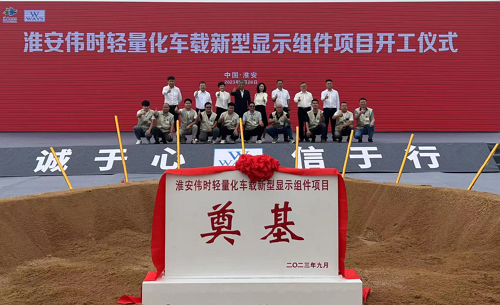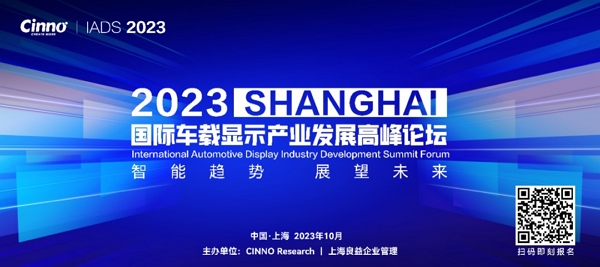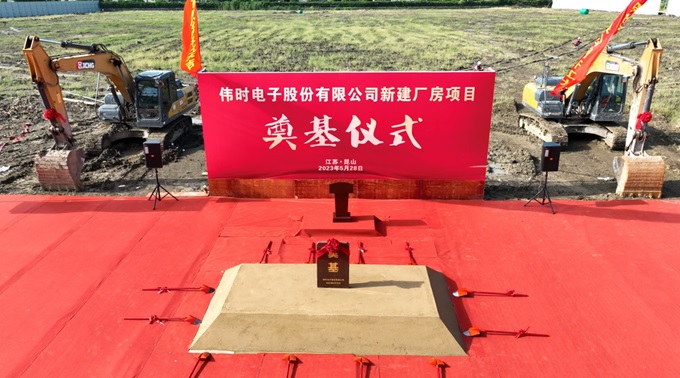
- About Ways
- Products & Applications
- Innovative R & D
- Media Center
- Investor Relations
- Company Announcement
- Summary of Announcements
- Investor Q & A
- Investment
- Contact Us
An iPad, a phone, a breakthrough network communication device... It's not 3 separate devices, we're going to call it the iPhone. "In 2007, at the Moscone Exhibition Center in San Francisco, Jobs opened a colorful era for hundreds of millions of consumers with a brief introduction. Today, color screens have penetrated into every corner of life, and more and more cars are also Begin to use increased volume and larger screens to decorate the interior, such as the Audi A8 only uses 3 monitors in the central control.
In this wave, WAYS Electronics, which has been deeply involved in backlight display modules and touch decorative panels for many years, has risen rapidly. Standing on the shoulders of "giants" such as Ford, Mercedes-Benz, BMW, and Toyota, Weishi Electronics has become a global leader in the field of automotive backlight display modules and automotive touch decorative panels.
"We are fortunate to usher in an era of change in the automotive industry. When we first started, the car screen ratio was generally 1:0.3, and later it became 1:0.5, 1:1. Now, this ratio is changing rapidly, The latest figure is 1:1.76. Looking at the large screens stacked on new cars, we believe that this ratio will soon become 1:3, 1:5, and this is our development space." Vice Chairman and General Manager of WAYS Electronics Introduced by Yamaguchi.
Create a "moat" in the segmented field
"Some consumers think that car monitors are not as advanced as mobile phone monitors, such as low resolution and large borders. In fact, consumer-grade monitors and car-grade monitors are very different, and have their own areas of expertise." Yamaguchi wins straight to the point. Solved the doubts in the minds of some consumers.
From the perspective of the use environment, most electronic components can be divided into the following levels: consumer grade, industrial grade, vehicle grade, military grade, aerospace grade, which are sorted from low to high according to the harshness of the use environment. Taking the iPad as an example for consumer-grade displays, the official recommended operating temperature is 0oC to 35℃, and the storage temperature is recommended to be between -20oC and 45oC. In addition to meeting the requirements for the use of lithium batteries, the liquid crystal display needs to be adapted to the environment, and the temperature is too low or too high. High will damage the display. Compared with consumer grades, automotive-grade monitors need to adapt to harsher environments. In the operating temperature, it is necessary to face a temperature difference of -35℃ to 85℃ totaling 120℃. At the same time, due to the long-term high-speed operation of the vehicle, the vehicle-level display also needs to undergo professional tests such as dustproof, vibration, anti-interference, durability, and impact. Each test needs to meet the standards before it can be installed on the car.
Behind the strict standards of vehicle regulations, it is the core competitiveness of Weishi Electronics. As early as 2005, Weishi Electronics was engaged in the production of backlight display modules, and in 2008 began to enter the automotive field. After years of accumulation, the company has mastered the key technologies in the development and manufacture of precision molds, the development and production of structural parts, the development and production of light guide plates, and the assembly of electronic devices. The core technology system mainly focuses on the development of high-brightness light guide plates, the development of thin light guide plates, the development of direct-type backlights, the development of ultra-narrow frame backlights, the development of large-size backlights, and module bonding.
"Our products meet the highest standards in the industry and can withstand high temperatures of 95℃ for more than 1,000 hours. There are also high-humidity tests, as well as cold and heat cycle tests from 95℃ to - 40℃." Yamaguchi introduced, in order to meet safety, Convenience and other needs, car-level displays need to consider many details, even including whether the driver sees whether the display is reflective, etc. Behind every detail is technical support. Mastering the core technology is only the first step. Yamaguchi said that on this basis, the company has built a production system for the entire industry chain, and the molds, hardware, light guide plates and other precision components required for the production of backlight display modules are all produced by themselves.
Whether the technology is strong or not, the customer list will speak. Weishi Electronics has established long-term and stable cooperative relations with Sharp, JDI (Japan Display Group), Shentianma, etc. The terminal application car companies include Ford, GM, Mercedes-Benz, BMW, Audi, Volkswagen, Toyota and other car companies.
The difference between automotive-grade products and consumer-grade products makes Weishi Electronics have a wider moat. Customers in the vehicle field are very strict in their selection of suppliers. Generally, they can enter the batch supply stage only after preliminary factory inspection and evaluation, rectification and acceptance, and small batch supply. Once customers in the automotive field choose a supplier, they often do not easily change it. At the same time, due to the rapid change of products in the automotive field, backlight display module suppliers must also participate in the research and development of high-level products for downstream customers to jointly promote the development of new products.
Yamaguchi revealed that the company is involved in the research and development of next-generation in-vehicle displays. Futuristic products such as "dual screen", "special-shaped screen" and "curved screen" will appear more and more in cars.
"Ride-hailing" changes in the automotive industry
The just-concluded Beijing Auto Show has undoubtedly pointed out the direction for the changing auto industry - the theme of "Intelligence Leading the Future" highlights the trend of the "new four modernizations" (intelligence, electrification, networking, and sharing) of the global auto industry , many domestic and foreign manufacturers focus on displaying the latest products and technological achievements in the "new four modernizations".
For consumers, the biggest change brought by the "new four modernizations" to the car is that there are more and more and larger displays in the car. For example, many Mercedes-Benz models use "dual 12.3-inch large screens", and some new car-making companies even cover the entire central control platform with displays, making them a 46-inch integrated display.
In the eyes of industry insiders, the car is no longer a simple mobile travel tool from point A to point B, but has been transformed into a mobile smart terminal with clean energy. As a smart terminal, cars will drive the demand for LCD screens, and it will be common to have 3, 5 or even 8 monitors in a car.
In the industry wave, the shipment volume of in-vehicle displays has increased rapidly. According to IHS Markit research, from 2015 to 2018, the global vehicle TFT-LCD panel shipments increased steadily, reaching 118 million, 135 million, 148 million and 162 million, respectively. Although affected by many factors in 2019, the global shipments of TFT-LCD panels declined slightly, but still maintained a high level.
According to a research report by Zhongtai Securities, the advent of the era of digital cars and smart cars has driven the explosive growth of the automotive display market. People's requirements for visual driving experience and car comfort continue to increase, and the demand for car audio and video and navigation information has surged. The development trend of in-vehicle display is larger in size, touch instead of buttons, and more intelligent interaction and information. It is estimated that in 2020, each car will be equipped with an average of 4 displays, with an average size of over 8 inches.
Yamaguchi said that a car LCD screen needs at least one backlight display module, and some large-size LCD screens need two or more backlight sources, which is a huge market development space.
The listing lays the foundation for WAYS Electronics to better meet the huge market opportunities. According to the plan, the funds raised from the IPO (after deducting the issuance costs) are planned to be invested in the expansion of backlight sources and new construction projects of decorative panels, production line automation technical transformation projects and R&D center construction projects. "While we are deeply cultivating the field of vehicle display, we will also use our own advantages to expand to a broader field." Yamaguchi Katsuya said that the company has obtained orders for backlight display modules used in Sharp smartphones, and is striving for the Sharp Group in notebook computers, Orders for backlight display modules in the consumer electronics display field such as VR. At the same time, the company has also moved towards a second-tier supplier in the automotive industry chain, integrating automotive touch decorative panels and backlight products into automotive LCD modules, and has received orders from Visteon.
"The automobile industry transformation train is ready to go, and we have stood on the platform. Through this IPO, we hope to better ride on this high-speed train and achieve greater development." Yamaguchi said.




